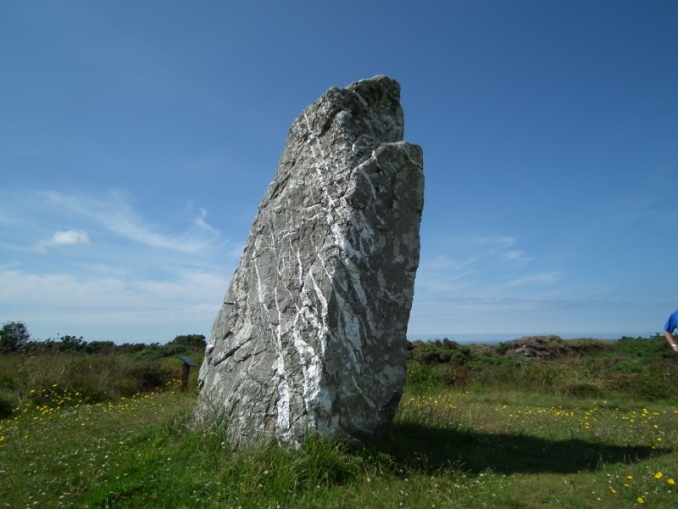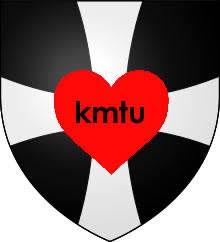Men Gurta - St Breock Downs Longstone. The heaviest standing stone in Cornwall
Men Gurta - St Breock Downs Longstone
The heaviest standing stone in Cornwall
This menhir or prehistoric longstone, which was originally about 16 feet high known as Men Gurta - the waiting stone - and also called St Breock Longstone. Weighing about 16.5 tons it is still the heaviest standing stone in Cornwall.
The word menhir is a combination of two words found in the Cornish language; men (stone), and hir (long).
Men Gurta is 4.9m high and is of local shale with veins of feldspar
A menhir is a large upright standing stone and they are found singly as monoliths, or as part of a group of similar stones. Their size can vary considerably; but their shape is generally uneven and squared, often tapering towards the top. They date from the late Neolithic and bronze age periods, roughly from 3000 to 1200 BC.
The purpose of menhirs remains unclear. Over the centuries there have been many conflicting theories about why they were erected and how they were used. Most archaeologists today accept that they had a wide range of functions: marking the boundaries of territory; meeting points; grave markers or fulfilling a religious/ceremonial role.
Men Gurta is in the care of the Cornwall Heritage Trust and is 3½ miles South West of Wadebridge off A39 (OS Map 200; ref SW 968683)
Kernow bys vyken!
![]()







